Eggs is Eggs
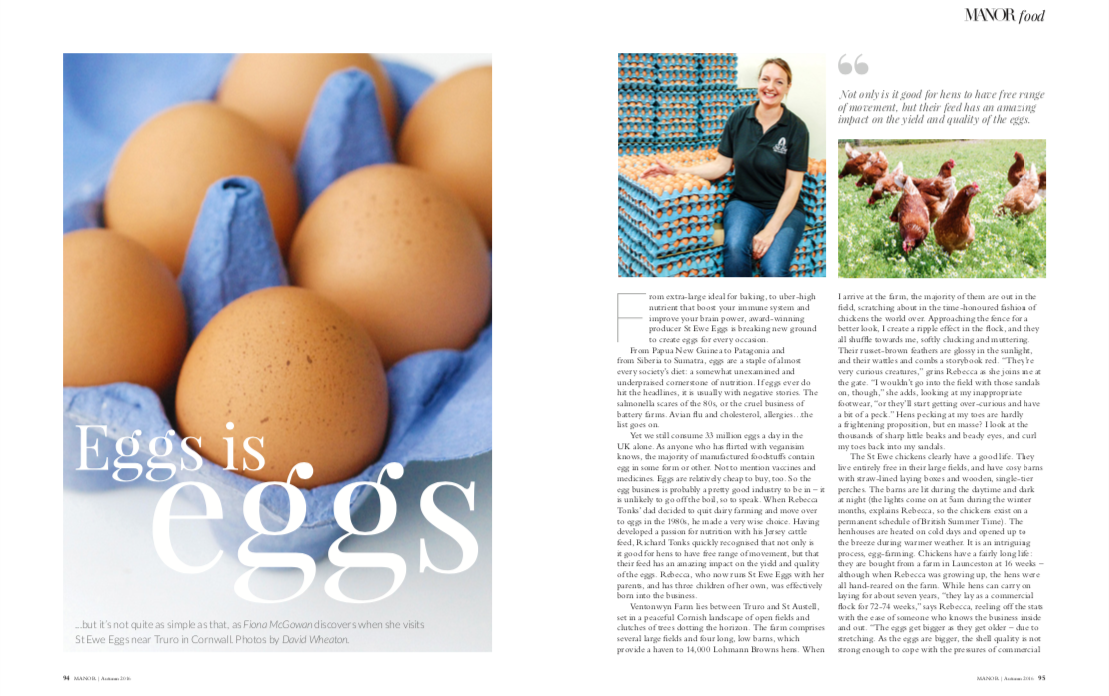
From Papua New Guinea to Patagonia and from Siberia to Sumatra, eggs are a staple of almost every society’s diet: a somewhat unexamined and underpraised cornerstone of nutrition. If eggs ever do hit the headlines, it is usually with negative stories. The salmonella scares of the 80s, or the cruel business of battery farms. Avian flu and cholesterol, allergies...the list goes on.
Yet we still consume 33 million eggs a day in the UK alone. As anyone who has flirted with veganisim knows, the majority of manufactured foodstuffs contain egg in some form or other. Not to mention vaccines and medicines. Eggs are relatively cheap to buy, too. So the egg business is probably a pretty good industry to be in – it is unlikely to go off the boil, so to speak. When Rebecca Tonks’ dad decided to quit dairy farming and move over to eggs in the 1980s, he made a very wise choice. Having developed a passion for nutrition with his Jersey cattle feed, Richard Tonks quickly recognised that not only is it good for hens to have free range of movement, but that their feed has an amazing impact on the yield and quality of the eggs. Rebecca, who now runs St Ewe Eggs with her parents, and has three children of her own, was effectively born into the business.
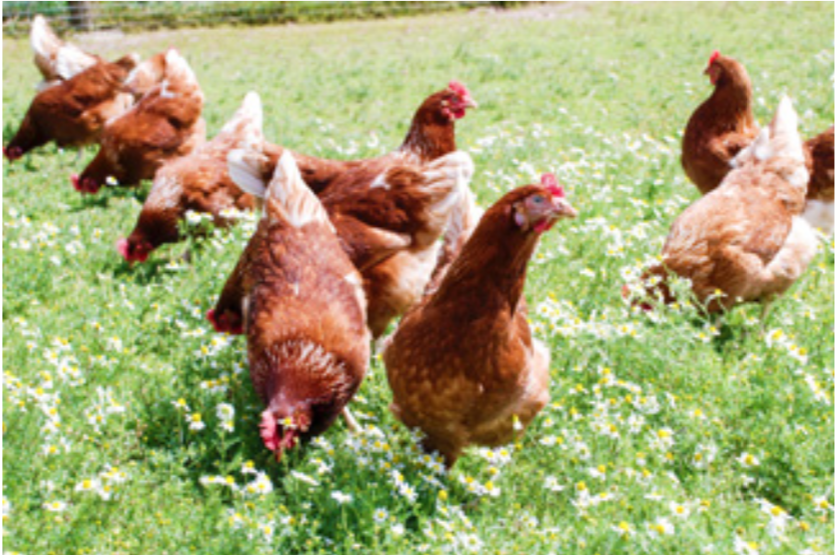
Ventonwyn Farm lies between Truro and St Austell, set in a peaceful Cornish landscape of open fields and clutches of trees dotting the horizon. The farm comprises several large fields and four long, low barns, which provide a haven to 14,000 Lohmann Browns hens. When I arrive at the farm, the majority of them are out in the field, scratching about in the time-honoured fashion of chickens the world over. Approaching the fence for a better look, I create a ripple effect in the flock, and they all shuffle towards me, softly clucking and muttering. Their russet-brown feathers are glossy in the sunlight, and their wattles and combs a storybook red. “They’re very curious creatures,” grins Rebecca as she joins me at the gate. “I wouldn’t go into the field with those sandals on, though,” she adds, looking at my inappropriate footwear, “or they’ll start getting over-curious and have a bit of a peck.” Hens pecking at my toes are hardly a frightening proposition, but en masse? I look at the thousands of sharp little beaks and beady eyes, and curl my toes back into my sandals.
The St Ewe chickens clearly have a good life. They live entirely free in their large fields, and have cosy barns with straw-lined laying boxes and wooden, single-tier perches. The barns are lit during the daytime and dark at night (the lights come on at 5am during the winter months, explains Rebecca, so the chickens exist on a permanent schedule of British Summer Time). The henhouses are heated on cold days and opened up to the breeze during warmer weather.
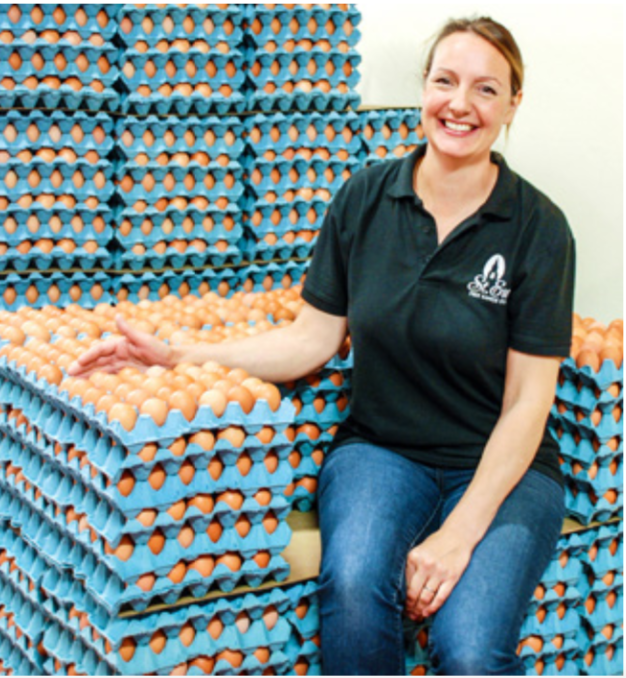
It is an intriguing process, egg-farming. Chickens have a fairly long life: they are bought from a farm in Launceston at 16 weeks – although when Rebecca was growing up, the hens were all hand-reared on the farm. While hens can carry on laying for about seven years, “they lay as a commercial flock for 72-74 weeks,” says Rebecca, reeling off the stats with the ease of someone who knows the business inside and out. “The eggs get bigger as they get older – due to stretching. As the eggs are bigger, the shell quality is not strong enough to cope with the pressures of commercial packing and shipping.” The hens continue to lay perfectly good eggs, though, and there are always plenty of takers for the hens that have reached the end of their supermarket-laying life.
St Ewe Eggs has carved a strong niche: they are sold in ASDA, Tesco, Sainsbury’s and Ocado. The free-range egg marketplace, however, is a crowded space, so Rebecca is dedicated to ensuring that her family’s eggs are consistently popular. Thanks to her father Richard Tonks’ decades of experience, they are capitalising on the fact that different feeds produce different eggs.
While I assume that happy, free-range chickens produce better eggs, Rebecca points out that free range chickens can actually have a more stressful existence than caged chickens. After all, battery hens exist in exactly the same conditions throughout their laying life. They never get scared by a buzzard or a seagull swooping down at them, so their eggs are very consistent in shape, size and quality. While it’s good from an ethical perspective for chickens to be RSPCA- assured free-range, as St Ewe’s hens are, “In the end, the eggs are only as good as the feed,” Rebecca says.
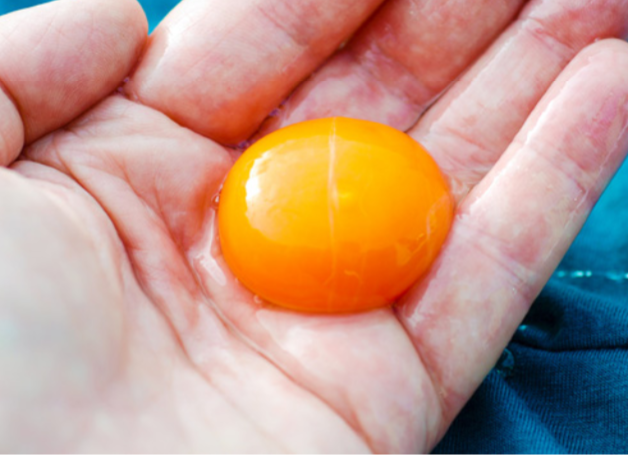
The chicken feed, distributed in the henhouse at the same times every day, helping to generate a consistent laying pattern, has been perfected by Richard Tonks and local supplier Lifton Mill to provide high energy, which gives top laying potential. The Hen Picked Eggs are the brand’s ‘best value’ eggs: they’re mixed weight, but still incredibly uniform in shape and colour. In the gleaming new sorting shed, I see how many eggs have to be discarded due to wrinkles and inconsistent shells. I pick up one which has a wobbly, rippled surface. What causes these anomalies? Rebecca explains that if chickens get a scare, there is an effect in the way the shell is produced. You might get a thin, corrugated shell on an over-large egg, or a speckled or half-tone shell which could be caused by the chicken getting too hot or having a scare.
In the sorting and packing shed, Rebecca explains that the slightly erratic nature of free-range eggs means that, in order to supply enough of their extra large ‘Grand’ egg range, they have to bring in eggs from five other Westcountry farms, whose chickens are reared in the same environment and given the same high-quality feed. They are checked for flaws and selected for size using hi-tech sorting machines, light boxes (where any flaws in the yolk can be picked up), and by good, old-fashioned human eyes – the small team of cheery egg-selectors carefully handling and selecting the best of the lot. There are racks of egg cartons stacked almost to the ceiling. Rebecca ticks off the numbers of pallets on her fingers – doing some spectacular mental arithmetic gymnastics before resorting to her calculator. “We ship around 76,000 eggs a week.”
I am most intrigued by the Boost the Roost eggs, sold in an eye-catching red box, emblazoned with nutrition catchwords like ‘Selenium’ and ‘DHA Omega 3’. The hens that lay these eggs are fed an enriched diet, says the box. The feed was developed initially because of a Tonks family ‘weak gene’ – a tendency towards pancreatitis. Rebecca and her parents found research that showed the natural antioxidant selenium could be an antidote to this potentially dangerous condition. Selenium – which is vital for physical and mental energy, the immune system, fertility and regulating the thyroid function – is often deficient in the UK diet. But the Tonkses discovered that, when fed to chickens, it is absorbed and deposited in the eggs.
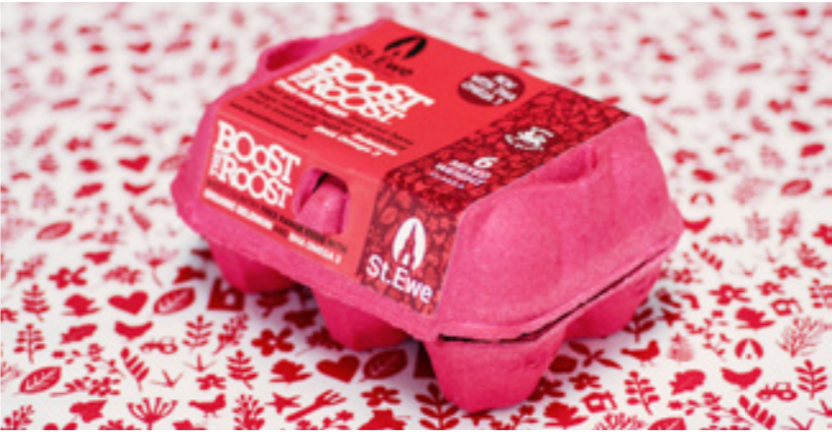
They then added spirulina to the feed: a wonder-nutrient found in algae which is high in the DHA Omega 3 fatty acids normally found in oily fish. Rebecca explains that adding spirulina extract is sustainable, as it’s harvested from algae rather than fish stocks. The eggs are checked rigorously to ensure that the feed is still having the same impact on the eggs: “We test them every 12 weeks to make sure they are still absorbing the nutrients,” says Rebecca, as we peek into the henhouse with its very healthy-looking chickens muttering away on their perches.
Another bespoke egg is the ‘Rich Yolk’ egg. A large egg sold in golden yellow boxes, this is almost exclusively designed for the catering industry – particularly high-end kitchens where the dishes conjured up have to look as good as they taste. To serve this market, St Ewe developed a feed that incorporates paprika (“You can’t put in too much, though, or it comes out slightly red,” says Rebecca) and marigold. Hotels, top chefs (Chris Eden at the Rosevine; Paul Ainsworth at No.6 and Rojano’s) and many London restaurants including Claridges are already major fans, and the orders keep on coming...
As I walk away with a large tray of ‘wibbly wobbly’ eggs that are sold to locals who are unfazed by external appearances, I realise that, while eggs is eggs, it’s not quite as simple as all that.
stewe.co.uk
